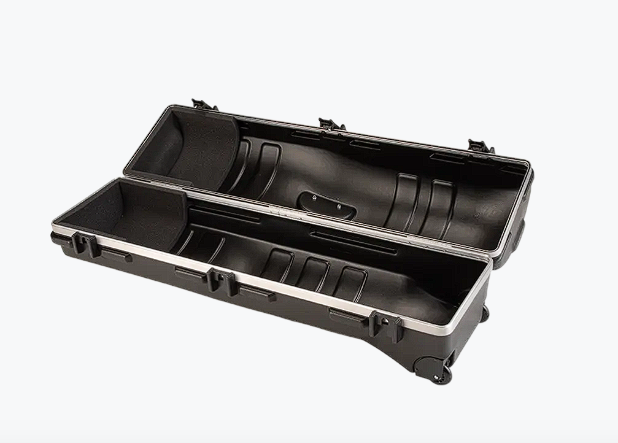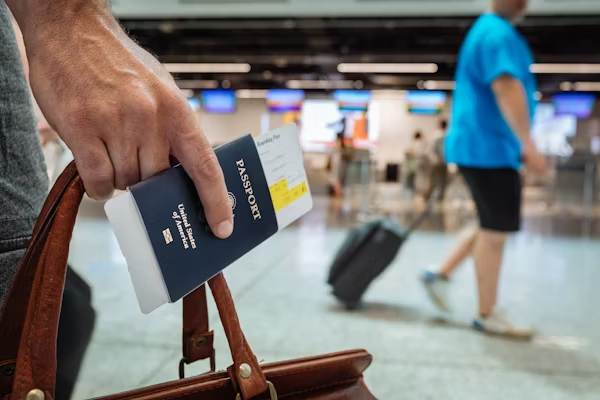Why Traveling with Your Own Clubs Matters
Planning to travel with golf clubs is one of the smartest decisions a golfer can make. Playing with your own set builds confidence and preserves consistency in your game. It also eliminates the awkwardness of adjusting to unfamiliar rental clubs. That said, flying with your gear can feel intimidating—unless you know exactly how to protect your equipment and prepare like a pro.
This guide breaks down everything you need to travel with golf clubs safely, efficiently, and stress-free.
Choosing the Right Golf Travel Bag
Soft Case vs. Hard Case
Pros of Soft Cases:
- Lightweight and easier to store
- Easier to store in smaller spaces
- Typically more airline-friendly when it comes to weight
Cons of Soft Cases:
- Less protection from rough handling
- Prone to squishing in cargo holds
Hard Case Pros:
- Maximum protection for your clubs
- Ideal for air travel and long trips
- Stackable and durable
Hard Case Cons:
- Heavier (watch those baggage fees!)
- Bulky and harder to pack in small rental cars
Pro Tip: If you plan to fly frequently or travel internationally, a hard case is your safest bet. However, for quick road trips, a quality padded soft case with a strong base will usually do the trick.
Top-Rated Golf Travel Bags Worth Checking Out

Club Glove Last Bag Large Pro
Used by touring pros, this soft bag is roomy, rugged, and trusted worldwide. Add the optional stiff arm for extra shaft protection.
SKB Deluxe ATA Hard Case
Virtually indestructible. Airline-proof. Comes with TSA-approved locks and a lifetime warranty


Sun Mountain ClubGlider Meridian
Built-in legs and wheels that extend for rolling ease. Say goodbye to dragging your clubs through crowded terminals.
Essential Protection Tips for Safe Club Transport
Use a Stiff Arm or Club Protector
This telescoping rod absorbs vertical impact so your clubheads don’t have to. A small investment that prevents big heartache.
Wrap Clubheads in Towels or Bubble Wrap
Tuck towels or soft clothing around the heads and shafts to cushion movement. Bonus: doubles as extra padding and saves suitcase space.
Remove Adjustable Club Heads (If Possible)
If you’ve got modern drivers or woods, unscrew the heads and store them separately in a padded pocket. Fewer moving parts = fewer break risks.
Secure Your Bag’s Interior
Use interior straps to cinch clubs in place. Fewer rattles = less risk.
What to Pack in (and Around) Your Golf Bag
Golf Essentials Only
Your bag should hold:
- Clubs
- Gloves (bring 2–3)
- Balls (don’t overpack — you can buy at your destination)
- Tees
- Rangefinder or GPS
- Towels
Shoes? Check Airline Rules First
Some bags have space for shoes in side pockets. But beware — overstuffing could tip your bag over weight limits.
Leave Liquids Out
Club cleaner, sunscreen, and bug spray go in your checked suitcase — not your golf bag. Avoid leaks and TSA issues.
At the Airport: Golf Bag Travel Pro Tips

Check Airline Policies in Advance
Not all carriers treat golf bags the same. Some include them in standard baggage allowance, others charge extra. Know before you go.
Weigh Your Bag Before You Leave
Stay under the weight limit (usually 50 lbs) to avoid surprise fees. Use a luggage scale and remove non-essentials if needed.
Label Everything
Use bright tags, your name, phone number, and destination address — both outside and inside your bag. If your gear gets lost, ID speeds up recovery.
Use AirTags or Bluetooth Trackers
Slide one into your bag before checking it. That way, you’ll know where it is — even if the airline doesn’t.
Car Rentals & Local Transport Considerations
Choose a Vehicle with Trunk Space
Golf bags are long and awkward — especially in hard cases. SUVs, minivans, or hatchbacks are your best bet.
Avoid Public Transport if Possible
Dragging a golf bag onto buses or trains? Not fun. Arrange private transfers or rental cars for ease and safety.
Shipping Your Clubs: Is It Worth It?
Services Like Ship Sticks or LugLess
These companies pick up your clubs at your home and deliver them to your hotel or resort. No airport hassle.
Pros:
- No baggage claim delays
- Skip oversized luggage counters
- Trackable delivery
Cons:
- Pricey, especially for international routes
- Requires planning and timing
Best For: Longer trips, multi-stop itineraries, or travelers who want to fly light.
At Your Destination: Handling Clubs with Care

Store Indoors, Not in the Car
Heat can warp grips and weaken glue on clubheads. Always bring your bag inside the hotel room or locker room.
Use Locker Facilities at Courses
Most top courses offer lockers and bag storage. Use them! It keeps your gear safe and gives you one less thing to carry.
Clean Clubs After Each Round
Travel can be dusty and humid. A quick wipe-down after each round keeps your sticks fresh and ready for tomorrow.
Final Thoughts: Make Golf Travel Easy & Enjoyable
Traveling with golf clubs doesn’t have to be a hassle. With the right gear, a little prep, and a few smart packing tricks, you’ll spend less time stressing and more time swinging. Your clubs are an extension of your game — take care of them, and they’ll take care of you wherever your golf adventures lead.
FAQs
- Should I buy a hard or soft travel case for my clubs?
A hard case is ideal for flying, while a soft case works for local car travel. - Can I pack golf balls and tees in my carry-on?
Yes! Golf balls and tees are TSA-approved. Just avoid sharp tools or liquids in your carry-on. - Is it safe to check my golf clubs with the airline?
It is—if you use a high-quality travel bag and secure your clubs properly. - How do I avoid overweight baggage fees with golf gear?
Weigh your bag, pack light, and store heavier items in your suitcase instead. - Is it better to ship my clubs or bring them on the plane?
Flying is faster and cheaper; shipping offers convenience and peace of mind.
